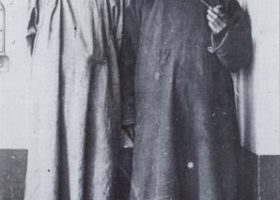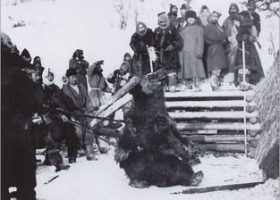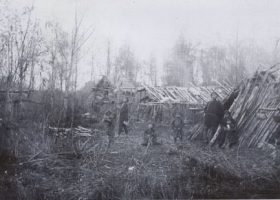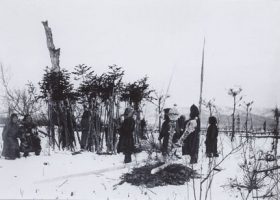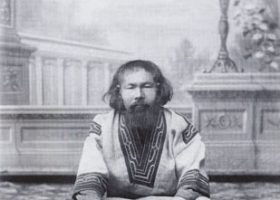Photography collection of B. Piłsudski
Bronisław Piotr Piłsudski (1866 – 1918) was a Polish cultural anthropologist who conducted outstanding research on the Ainu ethnic group, which at the time inhabited the Sakhalin Island, but currently most of them inhabit the Japanese island of Hokkaido and only a small minority are left on Sakhalin.
Piłsudski was involved in an undercover socialist group and was sentenced by tsarist Russian authorities to 15 years long hard labour exile on the Sakhalin Island.
The Ainu (a word meaning “man, people” in the Ainu language), are an ethnic group indigenous to the northernmost islands of Japan and the Kurile and Sakhalin Islands. They are recognized as the aborigines of Japan because they kept to traditional folkways.
The Ainu are somewhat taller than the Japanese, stoutly built, well proportioned, with dark-brown eyes, high cheek-bones, short broad noses and faces lacking length. The hairiness of the Ainu has been much exaggerated. They are not more hairy than many Europeans although much hairier than Japanese.
Modern debate on the origins of the Ainu generally considers them Mongoloid, not Caucasian or proto-Caucasian as held earlier. Some consider them Northern Caucasian along with the Ryukyu of Okinawa while the Japanese are Southern Mongolian. Recent genetic and morphological studies claim similiarities exist between the Ainu and American aborigines and between the Ainu and “Japanese” samurai.
The Ainu believe in a supreme Creator, but also in a sun-god, a moon-god, a water-god and a mountain-god, deities whose river is the Milky Way, whose voices are heard in thunder and whose glory is reflected in the lightning as well as object gods in pots and trees, etc. Their chief object of actual worship, appears to be the bear. Miss Isabella Bird (Mrs. Bishop) writes: “The peculiarity which distinguishes their rude mythology is the worship of the bear, the Yezo bear being one of the finest of his species. But it is impossible to understand the feelings by which this cult is prompted, for although they worship the animal after their fashion and set up its head in their villages, yet they trap it, kill it, eat it, and sell its skin. There is no doubt that this wild beast inspires more of the feeling which prompts worship than the inanimate forces of nature, and the Ainos may be distinguished as bear-
worshippers, and their greatest religious festival or saturnalia as the Festival of the Bear. … Some of their rude chants are in praise of the bear, and their highest eulogy on a man is to compare him to a bear.”










